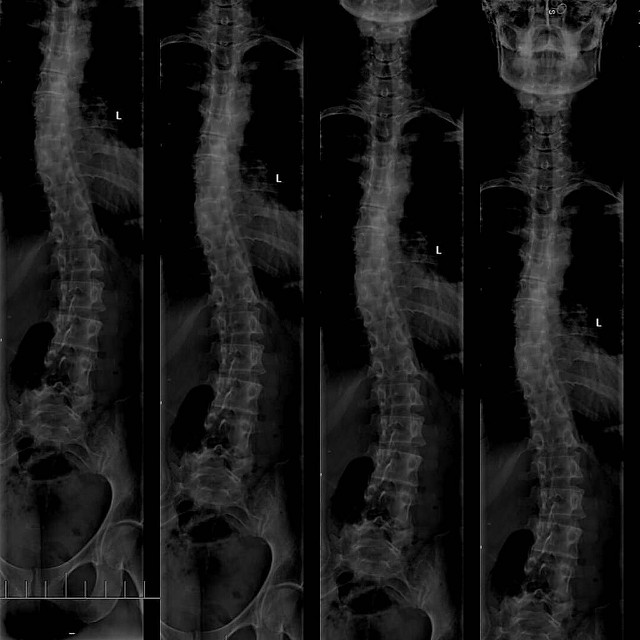Scoliosis is typically defined as a sideways curvature of the spine. It is most commonly present in pre-pubescent children who are about to undergo a growth spurt. The average diagnosis of scoliosis is mild and requires only monitoring, but a certain few cases can result in future complications such as lung damage and severe physical deformities if left untreated.
Most signs of scoliosis are physical: uneven shoulders, a shoulder blade more prominent than its counterpart, an uneven waist, and/or a discrepancy between the height of the hips. Approximately two to three percent of adolescent Americans suffer from some degree of scoliosis. As a result of this prevalence among children and teens, scoliosis is often detected during school screenings. In general, females are more likely to have scoliosis than males.
There are many types of scoliosis, including but not limited to congenital, degenerative, and idiopathic. While these first two varieties arise from pre-existing bone abnormalities and traumatic bone injury respectively, the last one exhibits no probable cause. Despite this ongoing mystery, idiopathic scoliosis is believed to be an inherited condition. Additionally, it typically only affects the growth years of adolescence and does not progress further in adulthood.
Depending on the severity of the diagnosis, scoliosis treatments range from routine x-ray monitoring to temporarily wearing a brace to undergoing surgery. However, less than 0.1 percent of the population suffers from the kind of severe curvature that warrants surgical intervention. Some of the factors taken into account when determining a course of action, if any, include gender, pattern of the curve, and location of the irregularity along the spine.
Scoliosis affects a significant number of American children, and thus it is important to be on the lookout for signs of this potentially dangerous condition. As with many other diseases, illnesses, and injuries, early detection and treatment of scoliosis are key to raising a happy and healthy future generation.
Feature Image Source: #scoliosis by Renee Prisble










